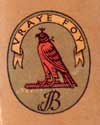Wed 1 Feb 2006
Generating Embryonic Stem Cells
Posted by boz under ScienceComments Off on Generating Embryonic Stem Cells
The Jan 12, 2006 issue of the journal Nature has a couple of interesting papers about generating embryonic stem cells, and a nice overview article. The image to the left here is a scan from a page in my notebook (click to enlarge). I couldn’t link directly to the graphic from Nature. For the overview (and the original graphic) see [1]; I’ll summarize here:
The “classical” way to produce embryonic stem (es) cells is to derive them from early “embryos”, or blastocysts, before they are implanted in a uterus. Fig A: The inner cells are removed and cultured into an es cell line. However, now the embryo is unable to implant.
Fig B: A new method [2] adapts a method used in IVF clinics for genetic diagnosis. A cell is removed from the 8-cell stage and used to create es cell lines. The 7-cell mass goes on (or could go on) to form a blastocyst and then implant.
One of the issues with both of the above methods is that the es cell lines produced are a mix of the two parents. A goal is to create a stem-cell line that is identical to a particular donor. At this point, only Nuclear Transfer (NT) (Fig C) can do this. However, the continuing ethical issue is that you again have to sacrifice the “embryo”. However, unlike the “classical” process, 99% of the blastocysts/embryos in NT fail – many at later stages putting the mother in danger. As an aside, when such an NT blastocyst is allowed to implant and grow, it is called “reproductive cloning”. Since 99% of the time such implants fail, the US National Academies have called for a ban on such “reproductive cloning”. [This is NOT a call for a ban on es cell line generation via this method.]
Fig D shows Alternative Nuclear Transfer (ANT). ANT was proposed by William Hurlbut, a member of President Bush’s Council on Bioethics. Meissner and Jaenisch [3] have shown a proof of technique for ANT. Basically, ANT relies on a modified nucleus (in this case the gene cdx2 is turned off) being used, which causes the resulting blastocyst to be unable to implant. However, even though the blastocyst can never implant, inner cells from the blastocyst can be used to derive es cells. This is proposed as a way to get by the ethical issue, since the blastocyst in ANT can never develop into an embryo due to the cdx2 mutation. However, it still bumps up against the issue of when life actually begins – which is not a scientific issue.
[1] Weissman, I.L., Nature 439, 145-148 (2006)
[2] Chung, Y. et al. Nature 439, 216-219 (2006)
[3] Meissner, A, & Jaenisch, R. Nature 439, 212-215 (2006)
